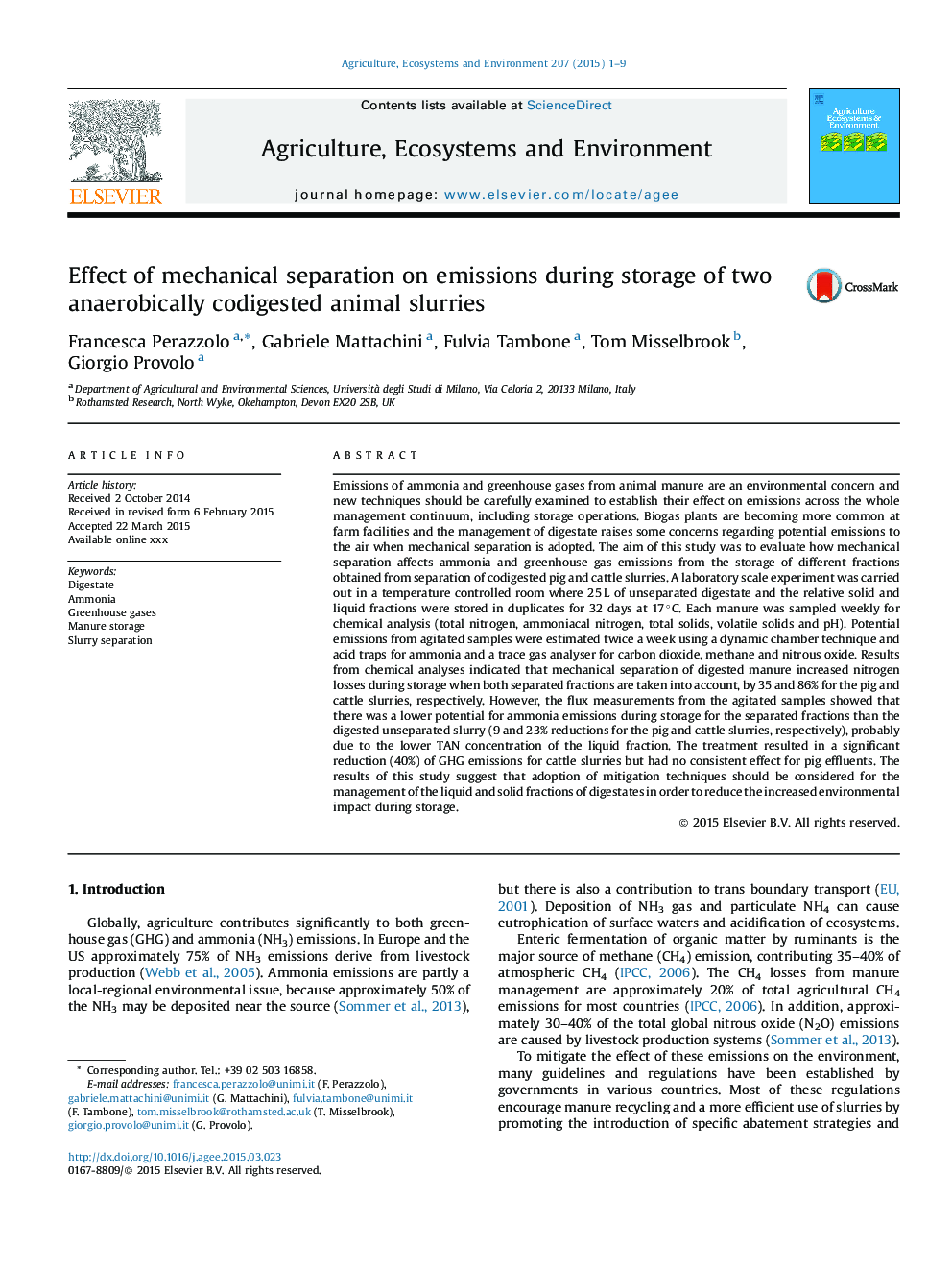| کد مقاله | کد نشریه | سال انتشار | مقاله انگلیسی | نسخه تمام متن |
|---|---|---|---|---|
| 8487703 | 1552045 | 2015 | 9 صفحه PDF | دانلود رایگان |
عنوان انگلیسی مقاله ISI
Effect of mechanical separation on emissions during storage of two anaerobically codigested animal slurries
ترجمه فارسی عنوان
اثر جداسازی مکانیکی بر انتشار در حین نگهداری دو انجیر حیوانی بدون انحصاری
دانلود مقاله + سفارش ترجمه
دانلود مقاله ISI انگلیسی
رایگان برای ایرانیان
کلمات کلیدی
دیابت آمونیاک گازهای گلخانه ای، ذخیره سازی کود، جداسازی مایع
موضوعات مرتبط
علوم زیستی و بیوفناوری
علوم کشاورزی و بیولوژیک
علوم زراعت و اصلاح نباتات
چکیده انگلیسی
Emissions of ammonia and greenhouse gases from animal manure are an environmental concern and new techniques should be carefully examined to establish their effect on emissions across the whole management continuum, including storage operations. Biogas plants are becoming more common at farm facilities and the management of digestate raises some concerns regarding potential emissions to the air when mechanical separation is adopted. The aim of this study was to evaluate how mechanical separation affects ammonia and greenhouse gas emissions from the storage of different fractions obtained from separation of codigested pig and cattle slurries. A laboratory scale experiment was carried out in a temperature controlled room where 25 L of unseparated digestate and the relative solid and liquid fractions were stored in duplicates for 32 days at 17 °C. Each manure was sampled weekly for chemical analysis (total nitrogen, ammoniacal nitrogen, total solids, volatile solids and pH). Potential emissions from agitated samples were estimated twice a week using a dynamic chamber technique and acid traps for ammonia and a trace gas analyser for carbon dioxide, methane and nitrous oxide. Results from chemical analyses indicated that mechanical separation of digested manure increased nitrogen losses during storage when both separated fractions are taken into account, by 35 and 86% for the pig and cattle slurries, respectively. However, the flux measurements from the agitated samples showed that there was a lower potential for ammonia emissions during storage for the separated fractions than the digested unseparated slurry (9 and 23% reductions for the pig and cattle slurries, respectively), probably due to the lower TAN concentration of the liquid fraction. The treatment resulted in a significant reduction (40%) of GHG emissions for cattle slurries but had no consistent effect for pig effluents. The results of this study suggest that adoption of mitigation techniques should be considered for the management of the liquid and solid fractions of digestates in order to reduce the increased environmental impact during storage.
ناشر
Database: Elsevier - ScienceDirect (ساینس دایرکت)
Journal: Agriculture, Ecosystems & Environment - Volume 207, 1 September 2015, Pages 1-9
Journal: Agriculture, Ecosystems & Environment - Volume 207, 1 September 2015, Pages 1-9
نویسندگان
Francesca Perazzolo, Gabriele Mattachini, Fulvia Tambone, Tom Misselbrook, Giorgio Provolo,
